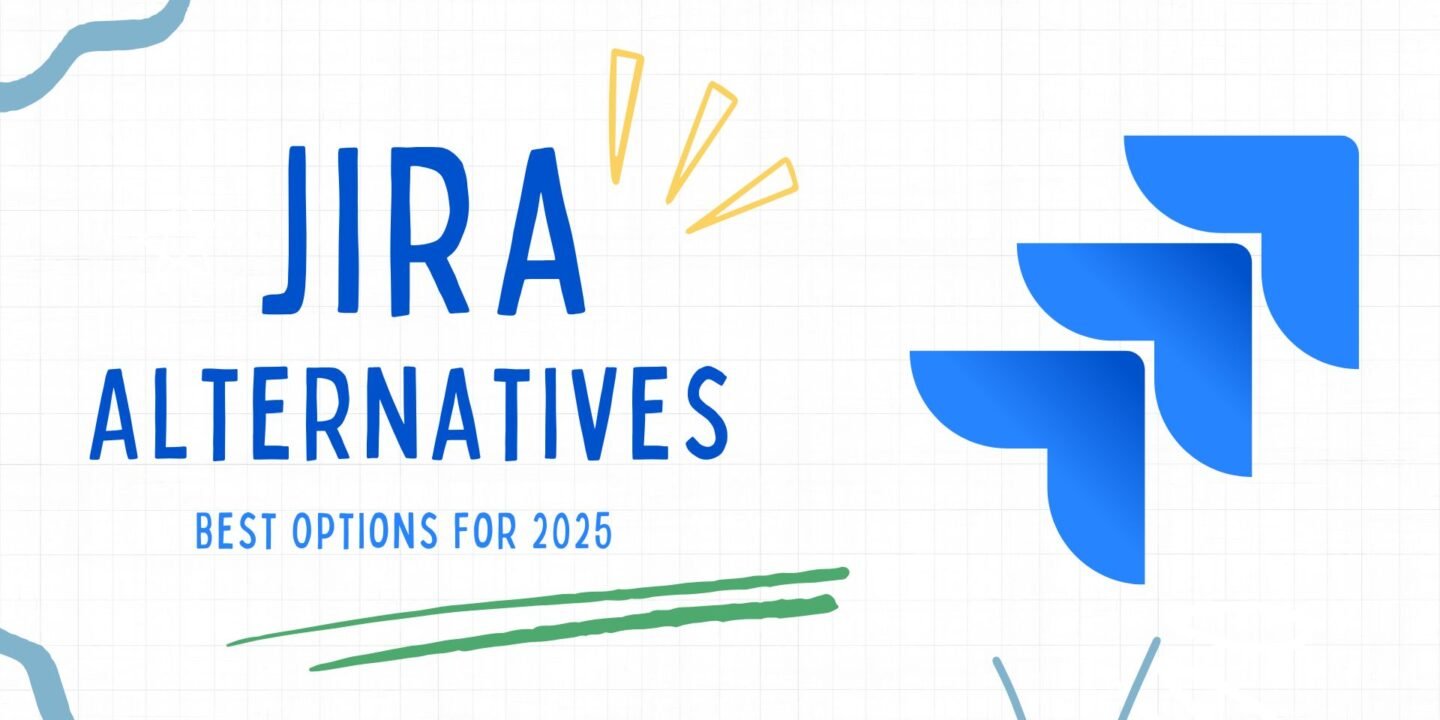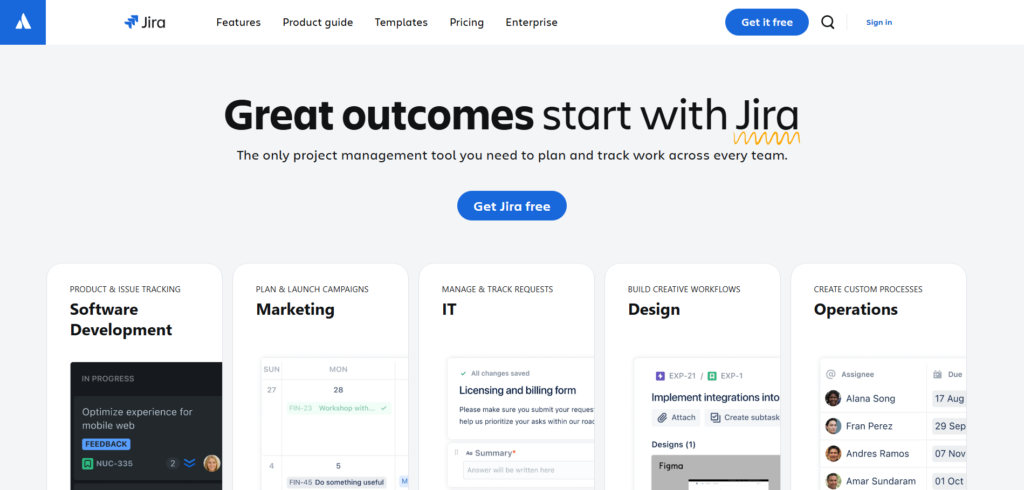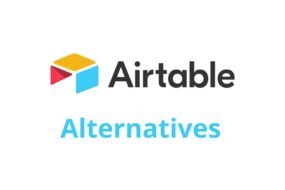
When it comes to project management tools, Jira is one of the first names that pops up. It is popular among software development teams, thanks to its extensive tracking features and integrations. But, let us be honest, Jira can feel a bit overwhelming. From its steep learning curve to the hefty pricing plans, it is not always the ideal fit for every team, especially smaller or non-technical teams.
The good news? There are plenty of Jira alternatives out there that offer similar or even better functionalities without the complexity. In this guide, we will walk through the best options for 2025, with each alternative explored in-depth. Let us dive in and find the perfect match for your team.
What Is Jira?

Jira is a powerful project management tool developed by Atlassian, widely known and used especially among software development and technical teams. Initially created as an issue and bug-tracking system, Jira has evolved to become a comprehensive project management solution tailored to agile methodologies like Scrum and Kanban. Over the years, it has become an essential tool for managing complex projects, tracking tasks, collaborating across teams, and monitoring overall project progress.
With its robust features, Jira is particularly popular among teams focused on software development, product management, and IT, where issue tracking, detailed workflows, and advanced analytics are highly valued.
Core Features Of Jira
Jira offers a variety of features tailored to agile and technical project management. Here are some of its primary functionalities:
- Agile Project Management: Jira is designed to support agile methodologies, offering tools for creating Scrum boards, Kanban boards, sprint planning, and backlog prioritization. It allows teams to break down projects into manageable tasks and track progress through agile workflows.
- Issue Tracking: Originally developed for bug tracking, Jira’s issue-tracking capabilities remain one of its biggest strengths. Teams can log, track, and resolve issues efficiently, with options for prioritization, categorization, and assignment.
- Customizable Workflows: Jira allows users to create customized workflows, adapting the tool to suit a wide variety of project management processes. This feature is especially helpful for companies with unique workflows or complex project needs.
- Detailed Reporting and Analytics: Jira provides comprehensive reporting tools that allow teams to analyze project metrics, performance, and progress. It includes burndown charts, velocity charts, and various other reports critical to agile project management.
- Integration with Atlassian Suite: Jira integrates seamlessly with other Atlassian products like Confluence, Bitbucket, and Trello, creating a cohesive ecosystem for managing projects, collaboration, and code repositories.
Pros & Cons Of Jira
Jira has a lot to offer, but it’s not without its limitations. Here’s a breakdown of its pros and cons.
Pros
- Extensive Customization Options: Jira provides a high degree of customization, allowing teams to create workflows, fields, and issue types that match their specific needs. This makes it highly adaptable across industries.
- Strong Support for Agile Workflows: With built-in Scrum and Kanban boards, Jira is well-equipped for agile project management. Its features like sprint planning and backlog organization are essential for agile teams.
- Advanced Reporting and Analytics: Jira’s reporting tools provide detailed insights into project status, team productivity, and areas for improvement. This is especially useful for managers and stakeholders who need to monitor progress and performance.
- Wide Range of Integrations: Jira’s integration capabilities, especially with Atlassian tools like Confluence and Bitbucket, create a unified workflow for teams, enhancing collaboration and project visibility.
- Ideal for Software Development: Jira’s focus on bug tracking and issue resolution makes it particularly valuable for technical and software development teams.
Cons
- Complexity and Steep Learning Curve: With its many features and customization options, Jira can be overwhelming for new users. Non-technical teams or users unfamiliar with agile methodologies may find it challenging to navigate.
- High Cost for Larger Teams: Jira’s pricing can become expensive, especially as the number of users grows. For larger teams, costs can quickly escalate, making it less affordable for some organizations.
- Overly Complex for Non-Technical Teams: Jira’s focus on technical project management makes it more suitable for software and development teams. Non-technical teams, such as marketing or HR, may find it overly complex for their needs.
- Limited Features on Lower-Tier Plans: Some essential features, such as advanced reporting and workflow automation, are only available on higher-priced plans, limiting access for users on basic plans.
Why Look For Jira Alternatives?
Although Jira is a robust and versatile tool, it doesn’t meet the needs of every team. Here are some common reasons why teams consider alternatives to Jira:
- Ease of Use
Jira’s interface, while feature-rich, can feel complicated, especially for new users or smaller teams. Many teams prefer tools that are simpler, easier to set up, and more intuitive. This is especially true for teams without a technical background or for companies where agile workflows aren’t central to their work processes.
- Cost Considerations
Jira’s cost can be prohibitive for growing teams, especially when considering the need for premium features and additional users. As teams expand, the expenses can add up quickly, making Jira less feasible for startups, smaller companies, or budget-conscious organizations.
- Specialized Needs
While Jira is powerful for agile and technical project management, some teams require features that Jira doesn’t fully support. For example, creative teams may need project views like Gantt charts or calendar views for content scheduling, which aren’t as prominent in Jira. Alternatively, client-facing teams may prioritize communication features that Jira lacks.
- Flexibility and Custom Views
Many teams look for project management tools that offer multiple views, such as list views, calendar views, and Gantt charts, to better visualize their work. Jira primarily uses boards, which can be limiting for teams needing different perspectives on their projects.
- Different Workflows and Collaboration Styles
For teams where agile methodologies don’t fit, Jira’s structure and workflow customization options can feel cumbersome. Teams that prefer a more straightforward task management approach, like Kanban boards or task lists, often find alternative tools more suitable for their workflows.
What Are The Key Criteria For Selecting Jira Alternatives?
When searching for a Jira alternative, it helps to know what criteria to prioritize. Here are some key factors to consider:
- Cost and Scalability
Budget is a major consideration, especially for startups or small businesses. Look for pricing plans that match your team’s size and offer scalable options as your needs grow. For instance, ClickUp and Asana offer various pricing tiers that suit different team sizes. - Key Features and Functionality
Decide what features are crucial for your team’s work style. For example:- Task and Workflow Management: Tools like Monday and Wrike provide flexible task management and customizable workflows.
- Collaboration: If collaboration is essential, consider tools with built-in communication features, like Monday’s messaging and ProofHub’s discussion boards.
- Time Tracking and Reporting: If your team needs time tracking or detailed reporting, look for alternatives like ClickUp or Smartsheet.
- Customizability
If your projects have unique workflows, consider a tool with a high degree of customization, such as ClickUp or Airtable. These tools allow you to build and adjust workflows, making them adaptable for various project types. - Integration Capabilities
Your project management tool should integrate smoothly with the tools you already use. Tools like Monday and Wrike offer numerous integrations, allowing your team to work seamlessly across platforms. - Customer Support and Resources
For larger or more complex projects, reliable customer support is critical. Check if the tool provides comprehensive support options, like live chat, email, or even onboarding assistance. User communities and documentation can also be valuable resources. - Ease of Use
Some tools, like Trello or Basecamp, are very user-friendly and easy to set up, making them ideal for teams looking for a quick start without extensive training. Look for intuitive interfaces, easy navigation, and tools that do not overwhelm users with too many features upfront. - Specific Use Case Compatibility
Some tools are better suited to certain industries or project types. For example, if your team focuses on client work or requires time tracking, a tool like Teamwork is ideal. Alternatively, if your team follows a Kanban methodology, Trello may be a more fitting option. - Remote Collaboration Features
With remote work on the rise, project management tools with collaboration features like real-time updates, video conferencing integrations, and file sharing are valuable. Asana, for instance, offers smooth remote collaboration with task commenting, project visibility, and integration with popular remote work tools.
Best Jira Alternatives For 2025
Here are the top 8 Jira alternatives to streamline project management, enhance team collaboration, and boost productivity with user-friendly features:
1. Asana
Asana is a well-known project management tool that is designed to help teams stay on top of tasks, deadlines, and project goals. Unlike Jira, which focuses heavily on technical features, Asana takes a more user-friendly approach, making it perfect for teams of all sizes.
Key Features
- Visual Project Management: Asana provides a variety of visual tools like Kanban boards, calendars, and timelines, making it easy to track project progress at a glance.
- Task and Subtask Management: With Asana, you can break down larger projects into manageable tasks and subtasks. Assign tasks to team members, set due dates, and track progress with ease.
- Customizable Workflows: Asana allows you to tailor workflows to fit your team’s specific needs. You can create custom fields, add project templates, and automate recurring tasks.
- Collaboration Tools: Team members can comment directly on tasks, attach files, and even tag each other to improve communication within the platform.
- Reporting: Asana offers reporting features that give insights into task completion rates, project timelines, and team workloads.
Pros
- User-friendly interface and simple navigation.
- Flexible enough for both small and large teams.
- Integration with popular tools like Slack, Google Drive, and Microsoft Teams.
- Customizable project templates for various use cases.
Cons
- Limited advanced project management features.
- Can become expensive as team size increases.
Why Asana is a Great Jira Alternative
Asana is ideal for teams looking for a straightforward tool that prioritizes usability over complexity. It is simple enough for beginners but powerful enough to manage big projects. For businesses that do not need all the technical features Jira offers, Asana provides a fresh, user-friendly option.
2. Monday
Monday is another popular project management tool that takes a visual approach to task management. Known for its bright, intuitive interface, Monday is particularly helpful for teams that want to see an overview of their work in a glance.
Key Features
- Visual Workflows: Monday uses customizable boards that allow you to organize tasks in various views, like Gantt charts, calendars, and Kanban boards.
- Automation: With Monday, you can set up automated workflows to handle repetitive tasks, like notifying team members when a task is completed or changing the status of a task at a specific time.
- Task Dependencies: Track tasks that are dependent on other tasks, ensuring that team members know what needs to be completed first.
- Time Tracking: Monday offers built-in time-tracking capabilities, which help in monitoring how long tasks take and managing workloads effectively.
- Integrations: It integrates seamlessly with various tools, such as Slack, Zoom, Google Workspace, and Trello, enhancing collaboration across platforms.
Pros
- Highly customizable and visually appealing.
- Great for teams that rely on visual project management.
- Strong automation and integration options.
- Scalable for teams of all sizes.
Cons
- Can be overwhelming with too many customization options.
- The cost can add up for larger teams.
Why Monday is a Great Jira Alternative
Monday combines flexibility with a visual approach, which is perfect for teams that want something user-friendly but powerful. The customization options allow it to fit into various workflows, and the automation saves time on repetitive tasks, making it a practical choice for diverse teams.
3. ClickUp
ClickUp is known for being an all-in-one productivity platform. It aims to replace multiple tools with a single app where you can manage tasks, goals, documents, and more. For teams looking to consolidate their tools, ClickUp could be the ideal Jira alternative.
Key Features
- Task and Project Management: ClickUp provides multiple task views, such as lists, boards, and calendars, to suit different project management styles.
- Goal Tracking: Teams can set goals, track progress, and even link tasks to those goals, keeping everyone focused on what matters.
- Docs and Wikis: ClickUp has built-in documentation and wiki features, allowing teams to store and share information directly within the platform.
- Time Tracking and Reporting: ClickUp offers native time tracking and reporting features to help with workload management and project insights.
- Templates and Customization: There are numerous templates available, and you can customize workflows, statuses, and even task fields to fit your needs.
Pros
- Offers a broad range of features in one tool.
- High level of customization for different workflows.
- Supports remote teams with collaborative document tools.
- Free plan available with decent features.
Cons
- The feature-rich interface can feel cluttered for beginners.
- Learning curve may be steeper compared to simpler tools.
Why ClickUp is a Great Jira Alternative
ClickUp’s all-in-one approach is perfect for teams that need a versatile platform. It covers everything from project management to documentation, making it a great option for teams that would like to simplify their tools into one powerful solution.
4. Trello
Trello is a popular choice among smaller teams and individuals who want a straightforward, visual way to manage tasks. Its Kanban-style boards are intuitive and easy to use, making Trello one of the simplest yet effective Jira alternatives.
Key Features
- Kanban Boards: Trello’s boards are designed to represent workflows in a simple, visual format, with cards representing tasks that can be moved through various stages.
- Labels and Checklists: Add labels to cards for easy categorization, and create checklists within tasks to break down steps.
- Power-Ups: Trello offers “Power-Ups” or integrations with tools like Google Drive, Slack, and Evernote to extend its functionality.
- Butler Automation: Trello’s Butler feature allows you to automate repetitive tasks, like moving cards or sending notifications.
- Team Collaboration: Team members can comment on cards, attach files, and set due dates, making Trello an effective collaboration tool.
Pros
- Extremely user-friendly and intuitive.
- Works well for smaller teams or simple projects.
- Lots of integration options for added functionality.
- Flexible and easy to customize.
Cons
- Limited built-in features without add-ons.
- Not ideal for large, complex projects with dependencies.
Why Trello is a Great Jira Alternative
Trello shines as a simple, visual project management tool. It is perfect for teams that do not need a full suite of features but want something effective to organize tasks and communicate. Its simplicity and ease of use make it a go-to choice for teams looking to get things done without hassle.
5. Wrike
Wrike is designed for larger teams and organizations that need robust project management tools. It offers advanced tracking, collaboration, and automation features, making it suitable for project managers who need detailed control over workflows.
Key Features
- Customizable Dashboards: Wrike provides dashboards that can be customized to show the most relevant project data, giving team members quick access to important tasks and information.
- Gantt Charts and Timeline: Wrike’s timeline view and Gantt charts help visualize project progress and manage dependencies effectively.
- Resource Management: Wrike offers features to manage team resources, assign tasks based on availability, and balance workloads across team members.
- Collaboration Tools: Wrike includes collaborative features like real-time commenting, @mentions, and document sharing to improve team communication.
- Advanced Reporting and Analytics: Wrike offers in-depth reporting and analytics features to monitor project performance and identify potential bottlenecks.
Pros
- Highly customizable and feature-rich.
- Suitable for managing complex projects with large teams.
- Advanced reporting and analytics.
- Integrates with popular tools like Slack, Salesforce, and Google Workspace.
Cons
- Steeper learning curve due to advanced features.
- Higher cost, especially for larger teams.
Why Wrike is a Great Jira Alternative
Wrike is ideal for teams that need more control over project workflows and resources. Its customization options and advanced tracking make it suitable for larger projects that require detailed oversight. If you need robust project management features without Jira’s complexity, Wrike is a solid choice.
6. Basecamp
Basecamp takes a simpler approach to project management, focusing on straightforward communication and task organization. It is a tool that emphasizes collaboration, making it suitable for remote teams or smaller organizations.
Key Features
- Message Boards: Basecamp’s message boards allow team members to discuss specific topics, reducing the need for lengthy email threads.
- To-Do Lists: Organize tasks and assign them to team members, with checklists and due dates to ensure everything stays on track.
- Schedule and Calendar: Basecamp provides a team calendar to view upcoming tasks, deadlines, and events, keeping everyone on the same page.
- File Storage: Teams can store and organize files directly within Basecamp, making it easy to find and share important documents.
- Automatic Check-ins: Basecamp allows you to set up automatic check-ins, prompting team members to give updates on their tasks.
Pros
- Simple, easy-to-use interface.
- Focuses on team communication and collaboration.
- Fixed monthly price for all features, no per-user charges.
- Great for remote teams.
Cons
- Limited advanced project management features.
- Not ideal for complex workflows or large organizations.
Why Basecamp is a Great Jira Alternative
For teams that need a straightforward tool for managing communication and organizing tasks, Basecamp is a solid choice. Its emphasis on simplicity makes it ideal for small teams or those who find Jira’s complex features unnecessary.
7. Smartsheet
Smartsheet is a unique project management tool that combines the functionalities of a spreadsheet with project management features. It is ideal for teams that prefer working with grids but need the advanced tracking and automation features that a typical spreadsheet cannot offer.
Key Features
- Spreadsheet Interface: Smartsheet uses a familiar grid layout, making it easy for teams used to spreadsheets to adapt quickly.
- Automation: You can set up workflows to automate repetitive tasks, saving time and reducing manual work.
- Task Management: Manage tasks, assign team members, set due dates, and track progress all from one place.
- Reporting and Analytics: Smartsheet’s reporting tools provide insights into project performance, helping you monitor progress and make data-driven decisions.
- Integration Options: Smartsheet integrates with popular tools like Microsoft Teams, Slack, and Google Workspace.
Pros
- Familiar layout for those used to spreadsheets.
- Customizable to fit various types of projects.
- Strong reporting and automation features.
- Easy to collaborate on and share with other team members.
Cons
- May not suit teams looking for a purely visual tool.
- Can feel limited for complex project management needs.
Why Smartsheet is a Great Jira Alternative
Smartsheet is perfect for teams that enjoy the structure of a spreadsheet but need more advanced project management capabilities. It bridges the gap between spreadsheets and project management tools, making it a versatile option for different types of projects.
8. Teamwork
Teamwork is a project management platform that focuses on collaboration and time tracking, making it a popular choice for client-based businesses. With its flexible setup, Teamwork is suitable for teams that need a tool for project tracking, task management, and client communication.
Key Features
- Project and Task Management: Organize projects into tasks, subtasks, and milestones to ensure every detail is accounted for.
- Time Tracking: Track time spent on tasks, making it easy to manage project budgets and bill clients accurately.
- Client Permissions: Teamwork allows you to set permissions, making it possible to share projects and progress updates with clients securely.
- Collaboration Tools: Team members can comment on tasks, share files, and even set up project templates for future projects.
- Advanced Reporting: Generate reports to track productivity, task completion, and project progress.
Pros
- Ideal for client-facing projects.
- Great time tracking and billing features.
- Flexible and customizable to fit different project needs.
- Integrates with tools like Slack, Google Drive, and HubSpot.
Cons
- Limited customization options for some users.
- Steeper learning curve for new users.
Why Teamwork is a Great Jira Alternative
Teamwork is well-suited for agencies, freelancers, and other client-based businesses. Its time tracking and client permission features make it easy to handle client projects from start to finish, making it a practical choice for service-based teams.
Which Jira Alternatives To Consider In 2025?
Choosing the right project management tool depends heavily on your team’s unique requirements, workflow, and budget. While each of the Jira alternatives offers valuable features, here’s a guide to help you decide which tool might best fit your team in 2025:
- If Your Team Prioritizes Ease of Use
- Consider: Monday or Trello
- Why: These tools have intuitive, visually-oriented interfaces that make them easy to learn and set up. They’re ideal for teams looking for quick onboarding without a steep learning curve.
- Best For: Small teams, non-technical teams, and those new to project management software who value a straightforward interface.
- If Your Team Needs Comprehensive Project Management Features
- Consider: ClickUp or Wrike
- Why: Both ClickUp and Wrike offer extensive project management functionalities, including task tracking, time tracking, collaboration, reporting, and integrations. These tools work well for teams handling multiple aspects of project management in one place.
- Best For: Large or cross-functional teams with complex workflows, technical teams, and organizations that require advanced customization.
- If Budget is a Primary Concern
- Consider: Asana or Trello
- Why: Asana and Trello both offer free plans that include essential project management features, which can be especially useful for startups and small businesses. They also have reasonably priced paid tiers that unlock additional functionality without significantly increasing costs.
- Best For: Small businesses, startups, and budget-conscious teams that need core project management tools without high costs.
- If Your Projects are Data-Heavy or Require Spreadsheet-Like Organization
- Consider: Smartsheet
- Why: Smartsheet’s spreadsheet-style interface is ideal for teams managing data-heavy projects. It combines the familiarity of a spreadsheet with project management features like Gantt charts, automation, and detailed reporting.
- Best For: Teams in construction, manufacturing, data analytics, and industries where spreadsheet-style project management is essential.
- If Your Team Needs Robust Documentation and Knowledge Management
- Consider: Notion
- Why: Notion excels in combining project management with knowledge management. It’s ideal for teams that need a flexible space to track projects, create documentation, and manage knowledge all in one place.
- Best For: Startups, creative teams, and remote teams needing a comprehensive workspace to document projects, store information, and collaborate.
- If Your Team Requires Strong Remote Collaboration Features
- Consider: Asana or ProofHub
- Why: Both Asana and ProofHub emphasize collaboration features, such as task commenting, project visibility, real-time updates, and integration with remote work tools. They are well-suited for remote or distributed teams that rely on virtual collaboration.
- Best For: Remote teams, distributed teams, and those requiring robust communication features integrated into project management.
- If Your Team Manages Client-Focused Projects
- Consider: Teamwork
- Why: Teamwork is designed for teams that work closely with clients. It offers time tracking, billing, client access, and collaboration features that make it easy to manage client-based projects.
- Best For: Agencies, client-based teams, and service-oriented businesses that need specific client-focused tools.
- If You Need an All-In-One, Highly Customizable Tool
- Consider: ClickUp
- Why: ClickUp offers extensive customization, with features that allow teams to design workflows, track goals, create documents, and manage tasks in one platform. This all-in-one approach can replace several other tools, making it versatile and adaptable for different types of projects.
- Best For: Teams looking for a single platform for project management, documentation, time tracking, and more, especially in environments where versatility is essential.
Conclusion
In 2025, finding the right project management tool means selecting a solution that aligns with your team’s unique needs, workflow, and goals. While Jira remains powerful, its complexity and cost may not suit every team. Fortunately, alternatives like Monday, Asana, ClickUp, and Smartsheet offer various strengths, from ease of use and flexibility to advanced project tracking and collaboration features.
The best tool depends on what matters most to your team—whether it’s an intuitive setup, detailed reporting, client-focused features, or a blend of task and knowledge management. Each alternative provides unique benefits, making it possible for any team to find the ideal fit. Explore free trials, involve team members in testing, and prioritize features that streamline your workflow. With the right project management tool, you can enhance productivity, simplify collaboration, and drive successful project outcomes in 2025 and beyond.








No Comments